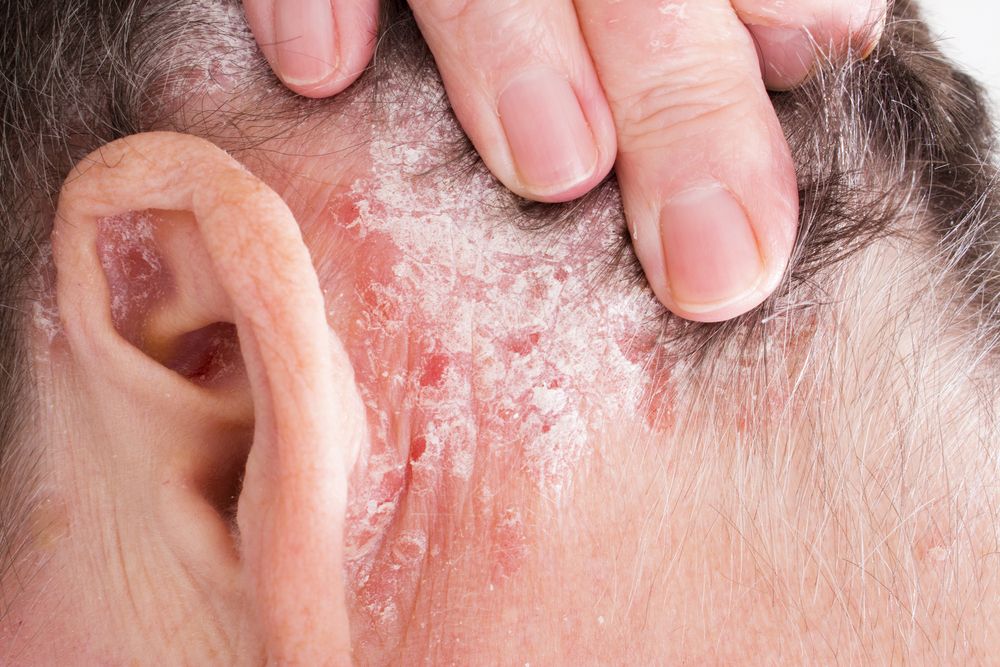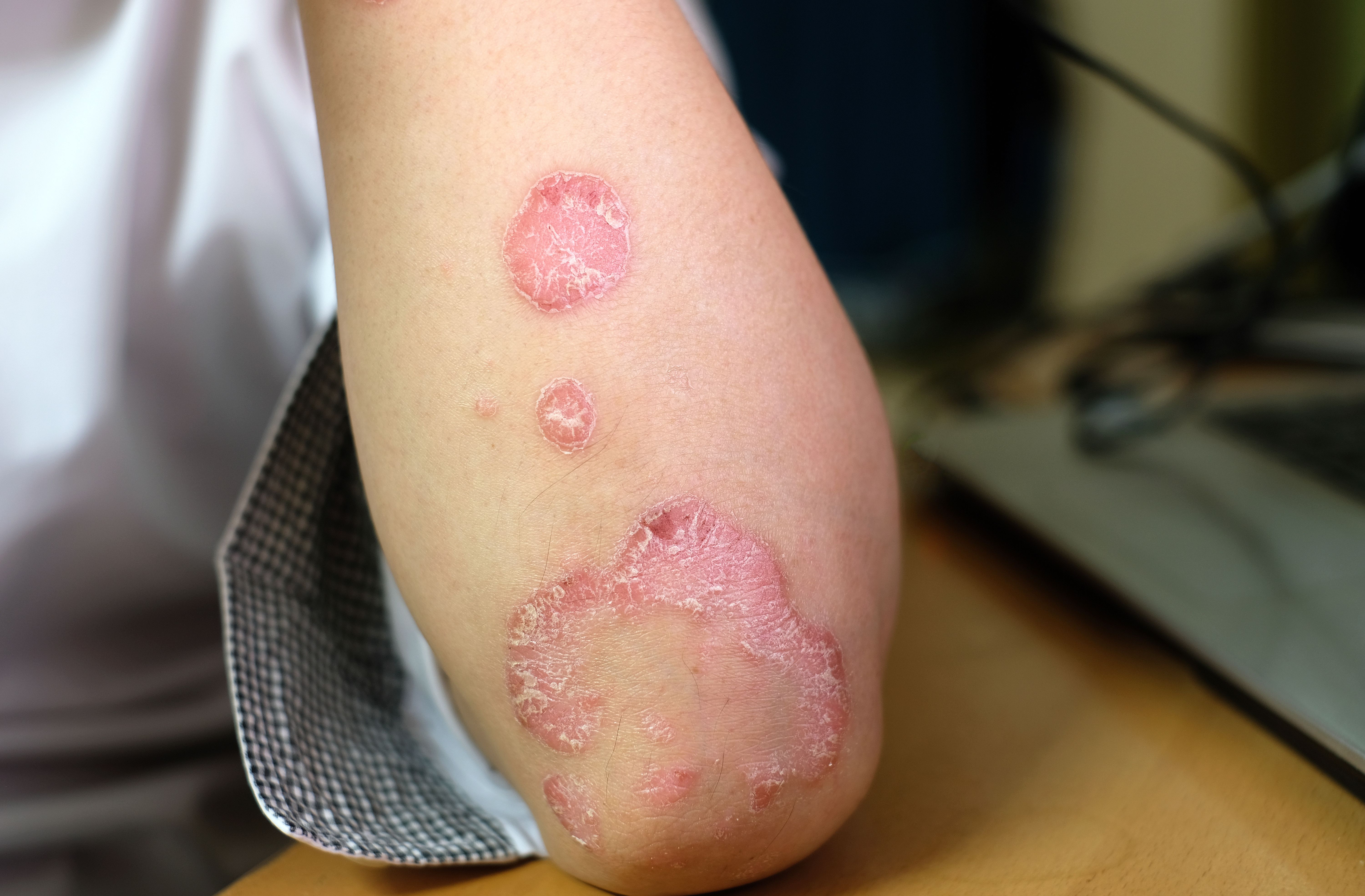- Acne
- Actinic Keratosis
- Aesthetics
- Alopecia
- Atopic Dermatitis
- Buy-and-Bill
- COVID-19
- Case-Based Roundtable
- Chronic Hand Eczema
- Chronic Spontaneous Urticaria
- Drug Watch
- Eczema
- General Dermatology
- Hidradenitis Suppurativa
- Melasma
- NP and PA
- Pediatric Dermatology
- Pigmentary Disorders
- Practice Management
- Precision Medicine and Biologics
- Prurigo Nodularis
- Psoriasis
- Psoriatic Arthritis
- Rare Disease
- Rosacea
- Skin Cancer
- Vitiligo
- Wound Care
Article
Promising treatments in the pipeline for psoriasis
Author(s):
Psoriasis treatment has expanded dramatically over the past decade, and the growth shows no signs of stopping. Andrew Blauvelt, M.D. discussed new drugs in the pipeline during American Academy of Dermatology Annual Meeting in Washington, D.C.
These potential new psoriasis treatments are already engaged in human clinical studies. (©ClaudiaPylinskaya/Shutterstock.com)

Psoriasis treatment has expanded dramatically over the past decade, and the growth shows no signs of stopping.
Within the next five years, the industry can expect to see potentially three new biologic therapies and one additional oral agent.
Andrew Blauvelt, M.D., a dermatologist with Oregon Medical Research Center, discussed the new drugs in the pipeline during the American Academy of Dermatology Annual Meeting in Washington, D.C.
“Despite the emergence of highly efficacious and safe therapies for psoriasis in the last several years, the psoriasis pipeline continues to be vibrant,” he said.
These potential new treatments are already engaged in human clinical studies.
RISANKIZUMAB
This biologic therapy has been found, in clinical studies, to improve the presence of psoriasis by 38 percent over ustekinumab, he said.
Study results indicate it is more efficient than other interleukin (IL)-23 blockers on the market, and it is durable for more than a year. It currently presents no safety concerns and offers convenient dosing every 3 months.
It also has potential efficacy for psoriatic arthritis and Crohn’s disease. However, it does not appear effective for ankylosing spondylitis. The Food & Drug Administration (FDA) will likely approve risankizumab this spring, he said.
MIRIKIZUMAB
This second biologic has also performed well in clinical studies. Results revealed it creates an 82 percent improvement in psoriasis symptoms among patients who previously received placebo treatment.
Although initial studies found it to be slightly less effective than other IL-23 blockers, a dose increase in Phase 3 trials improved performance, he said. The therapy is equally durable to risankizumab - more than a year, and it presents no safety concerns. Dosing is set at every 2-to-3 months.
In addition to psoriasis, it shows an indication for ulcerative colitis, and potential FDA approval could come in 2021.
BIMEKIZUMAB
As a biologic, this therapy showed 93 percent to 100 percent of psoriasis patients maintained a PASI 90 response from week 12 to week 60 in clinical studies.
Compared to other IL-17 blockers on the market, bimekizumab is more effective, and it has a durability of more than 1 year. It does present a risk of mucutaneous candidiasis, but no other safety concerns are identified. Dosing occurs every 1-to-2 months.
Alongside treating psoriasis, it shows relative efficacy in addressing psoriatic arthritis, but it may not be effective in addressing irritable bowel disease. Research anticipate FDA approval in 2020.
BMS-986165
This is the only oral therapy in the pipeline, Blauvelt said. While more effective than most oral therapies on the market, it does not appear to be as effective as most biologics on the market.
Currently, its durability is unknown as are the other diseases it could impact. Its safety profile is good, but it can cause some nausea, headaches, acne, and high creatine phosphokinase levels.
If approved by the FDA - potentially in 2021 - it would be dosed daily.
Although these therapies are not yet on the market, it’s important for dermatologists to be aware of the additional treatment options for the psoriasis patients. It will help them prepare to offer the best care possible, Blauvelt said.
“These new additions will give dermatologists a greater set of therapeutic options that are safe and, in some cases, even more efficacious than existing choices,” he said. “These drugs will also enable clinicians greater ability to achieve clear or near-clear skin, the new gold standard in treating psoriasis, in the majority of their patients.”
Reference:
S036 – Psoriasis. “Pipeline of New Therapeutic Agents for Psoriasis.” Andrew Blauvelt, M.D., 1-4 p.m., March 2, American Academy of Dermatology Spring Meeting 2019, Washington, D.C.
Newsletter
Like what you’re reading? Subscribe to Dermatology Times for weekly updates on therapies, innovations, and real-world practice tips.







